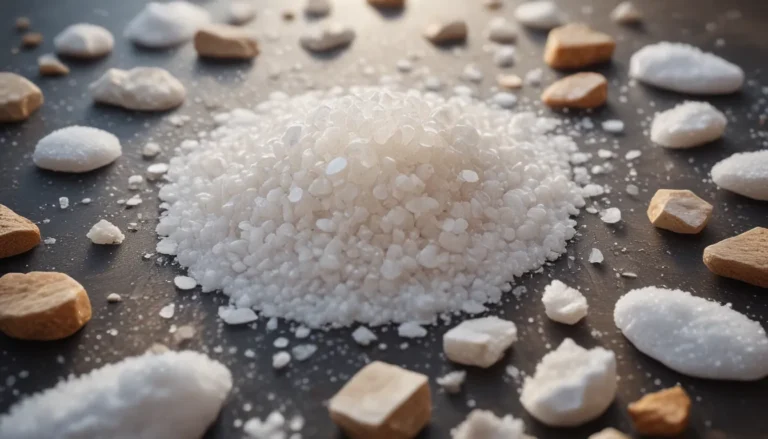A Note About Images: The images used in our articles are for illustration purposes only and may not exactly match the content. They are meant to engage readers, but the text should be relied upon for accurate information.
Diamagnetism, a captivating phenomenon in chemistry, often flies under the radar compared to its more famous counterparts, ferromagnetism, and paramagnetism. However, this unique form of magnetism possesses intriguing properties worth exploring. Diamagnetic materials have the remarkable ability to repel magnetic fields rather than being drawn to them, setting them apart from other types of magnets. In this article, we will uncover eight astounding facts about diamagnetism, shedding light on its characteristics, applications, and the mesmerizing nature of this lesser-known magnetic phenomenon. Let’s embark on a journey into the realm of diamagnetism and unearth eye-opening information that will expand our knowledge of this captivating scientific concept.
Unveiling the Mysteries of Diamagnetism
Diamagnetism stands out as a distinctive property of certain materials that enables them to generate a weak magnetic field in opposition to an externally applied magnetic field. This unique behavior distinguishes diamagnetic materials from ferromagnetic or paramagnetic substances, showcasing the diversity of magnetism in the world of materials.
Diverse Manifestations of Diamagnetism
Diamagnetism manifests in a wide array of substances, encompassing water, graphite, bismuth, and even living organisms like plants and animals. Unlike ferromagnetism or paramagnetism, which rely on specific atomic or molecular configurations, diamagnetism is a fundamental property inherent in all materials to varying degrees.
The Phenomenon of Magnetic Repulsion
One of the most captivating aspects of diamagnetism is the ability of diamagnetic substances to generate a magnetic field that opposes the applied magnetic field. This results in a repulsive force when the material encounters a magnet, showcasing a subtle yet fascinating interaction between the material and the magnetic field.
Levitating Wonders of Diamagnetism
A visually stunning demonstration of diamagnetism is diamagnetic levitation, where a diamagnetic material suspends in mid-air between two powerful magnets. The repulsive force counteracts gravity, enabling the material to float effortlessly in space. This spectacle highlights the intricate dance between magnetism and gravity.
Superconductors: Pioneers of Diamagnetism
Superconductors, renowned for their ability to conduct electricity with zero resistance at low temperatures, exhibit remarkable diamagnetic properties. Upon reaching their critical temperature, superconductors expel magnetic fields from their interior, known as the Meissner effect. This unique trait paves the way for applications like magnetic levitation and efficient energy transmission.
Uniting Diamagnetism and Paramagnetism
While diamagnetism is often juxtaposed with paramagnetism, there are instances where both properties coexist in the same material. This phenomenon, known as anti-ferromagnetism, emerges in specific compounds with distinct crystal structures, showcasing the intricate nature of magnetic behavior.
Practical Applications of Diamagnetic Shielding
The ability of diamagnetic materials to repel magnetic fields finds practical applications in shielding sensitive instruments from external magnetic interference. MRI machines utilize superconducting diamagnetic materials to create a controlled magnetic environment, facilitating detailed medical imaging with precision.
Diamagnetism’s Role in Scientific Exploration
Diamagnetic materials serve as pivotal subjects of study in the realms of materials science and physics. Researchers delve into their unique magnetic characteristics to gain insights into quantum phenomena and fundamental interactions between matter and magnetic fields, laying the groundwork for unraveling other magnetic mysteries.
These eight remarkable facts about diamagnetism underscore the allure of this property of matter, captivating the attention of scientists and enthusiasts alike. From defying magnetic fields to orchestrating levitation marvels, diamagnetism unveils a symphony of interactions between magnetism and materials, shaping our understanding of the natural world.
Embracing the Marvels of Diamagnetism
In conclusion, diamagnetism emerges as a captivating marvel with a myriad of enchanting facts that illuminate its intrinsic properties. From its magnetic repulsion tendencies to its intricate ties with superconductivity, diamagnetism continues to captivate the fields of physics and chemistry. Unraveling the secrets of diamagnetism not only enriches our comprehension of the universe but also holds practical implications across industries ranging from materials science to medical imaging. The next time you encounter a material exhibiting diamagnetic behavior, recall these eight astounding facts and relish the hidden wonders of this enigmatic phenomenon.
Frequently Asked Questions
-
What is diamagnetism?
Diamagnetism refers to the property exhibited by certain materials that causes them to create a weak magnetic field opposing an externally applied magnetic field. -
How does diamagnetism differ from paramagnetism?
While diamagnetic materials generate magnetic fields opposing external fields, paramagnetic materials align their magnetic moments in the direction of the external field. -
Are all materials diamagnetic?
Not all materials are diamagnetic, as some substances, like iron or nickel, can also exhibit paramagnetic or ferromagnetic properties alongside diamagnetism. -
Can diamagnetic materials be magnetized?
Diamagnetic materials possess weak magnetic characteristics and are not easily magnetizable. However, exposure to strong magnetic fields can induce temporary magnetization in these materials. -
What are some everyday examples of diamagnetic materials?
Everyday examples of diamagnetic materials include water, wood, plastic, graphite, copper, and gold. -
Is there a connection between diamagnetism and superconductivity?
Indeed, there is a strong correlation between diamagnetism and superconductivity. Superconductors, displaying perfect diamagnetism, expel all magnetic fields from their interiors. -
Do diamagnetic materials find practical applications?
Diamagnetic materials hold practical utility in various applications, with magnetic levitation standing out as a prominent example where the repulsion between diamagnetic materials and magnetic fields enables frictionless movement and levitation. -
Can diamagnetism be observed in living organisms?
Yes, diamagnetism is observable in living organisms. Certain creatures, such as frogs and small insects, showcase diamagnetic behavior, allowing them to levitate in the presence of strong magnetic fields.
As we navigate the realm of diamagnetism, these facts serve as beacons illuminating the path to deeper understanding and appreciation of this captivating property of matter. Join us in uncovering the mysteries of diamagnetism and embrace the enchanting world where magnetism and materials intertwine in a mesmerizing dance of scientific exploration.






